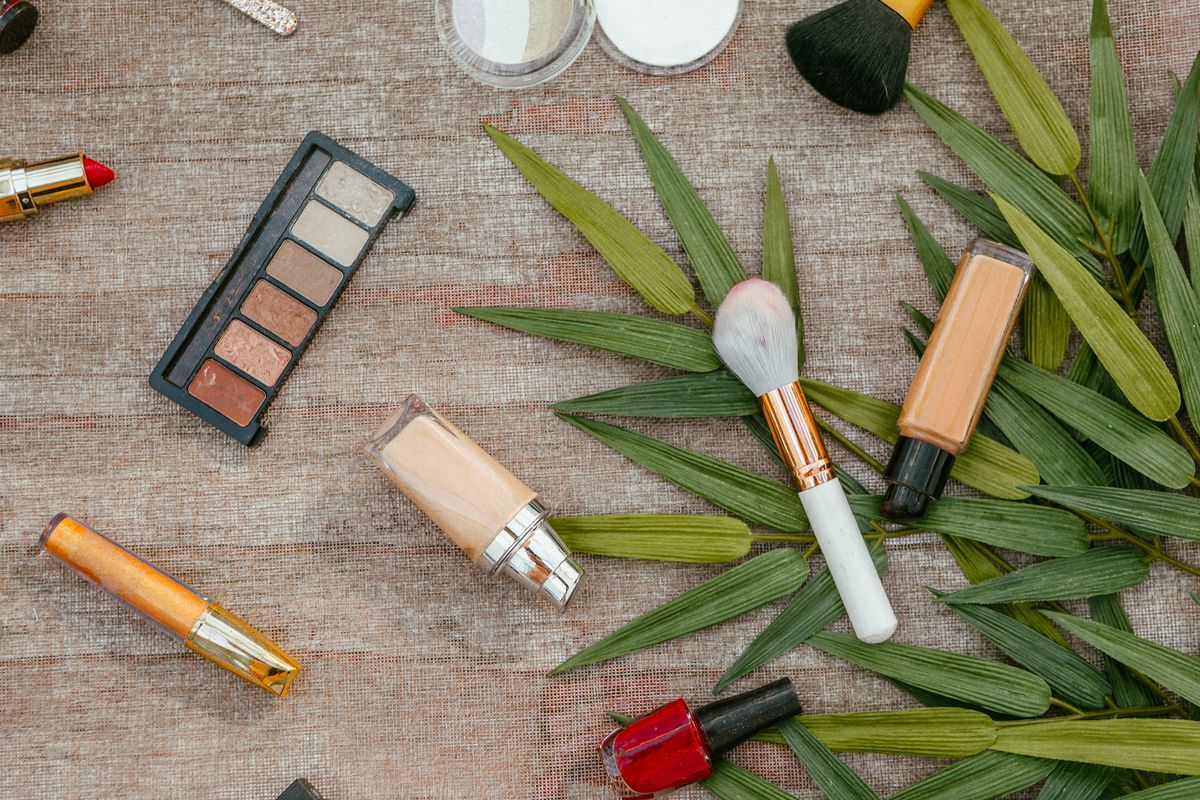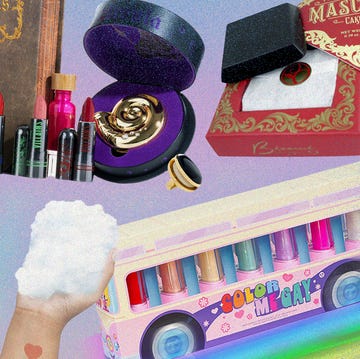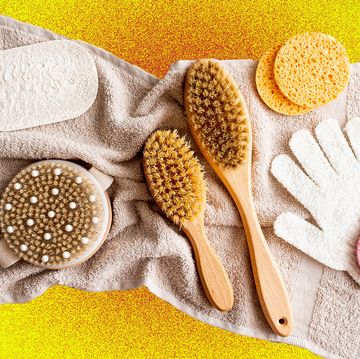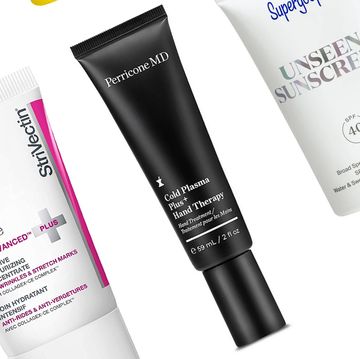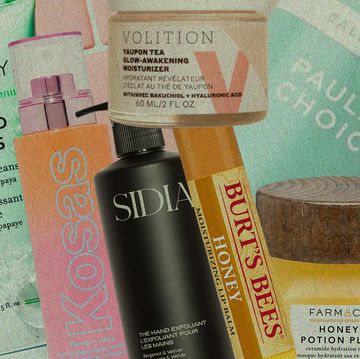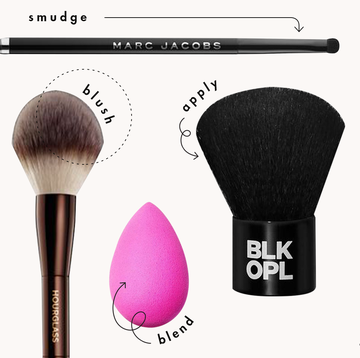With the impact of climate change only worsening, the concept of upcycling — the practice of reusing discarded products or objects and turning them into something new — is popping up everywhere. What started as an indigenous practice and a DIY designer movement has trickled into the mainstream, moving across the fashion and beauty industries.
Big-name fashion brands like Proenza Schouler and Gabriela Hearst are upcycling old designs and fabrics into new pieces, while in the beauty world discarded ingredients, i.e. ones that were once considered waste, are being touted as the hero product or utilized as a supporting ingredient in skincare. This is the dawn of byproduct beauty, a sustainable skincare trend challenging us to rethink how we see waste.
Byproduct beauty is considered part of the zero-waste movement; under this trend, what once was thrown away, whether that’s leftovers or unused raw materials, is now being better used in new beauty products that are then sold to consumers, helping to reduce overall waste.
So, what’s in the products?
“Waste is upcycled to make cosmetic ingredients, or used as an input elsewhere in the manufacturing system,” says Sarah Jay, researcher and co-creator of the Toxic Beauty documentary. What would conventionally be waste, like peels or plant leaves and stems, are being distilled into essential oils, while coffee grounds or seed pods are repurposed into fertilizer or sustainable packaging, according to Jay. With little industry regulation, the use of byproduct ingredients does not necessarily ensure that a product is nontoxic, natural, organic or vegan.
“Byproduct can also mean that animal byproducts like whey, collagen, lanolin, and shark squalene are made use of when the animal may have been raised and killed primarily for another purpose or commodity, say, its meat, milk, wool, or fins, respectively,” says Jay. The ingredients used have been viewed for a long time as unusable and usually thrown away. “However, that’s all changing now that brands are utilizing pulps, seeds, oils, waters, etc. to create exciting, new sustainable products,” says Melissa Hago, vice president and creative director of beauty at Fashion Snoops.
“Ingredients are essentially byproducts of other commonly used processes and are repurposed for their beneficial effects on the skin,” says dermatologist Joshua Zeichner. “Think of this as compost for your face.” According to him, this trend is in line with the direction of skincare, which is moving toward minimizing waste, sustainable and environmentally conscious sources, and natural ingredients. But do these products work? “Byproduct-beauty skin benefits depend on complements of ingredients in the particular cream. Products have been developed to address all the regular skin concerns including dryness, dark spots, and even wrinkles,” says Zeichner.
Why is this trend happening?
Byproduct beauty gives us the opportunity to reconsider how we use beauty products to create a healthier planet. “The hard truth is that we are absolutely exhausting the planet’s resources, and what we view as ‘waste’ will soon become an essential asset,” Hago warns.
The heat is on the beauty industry to clean up its act, says Jay. “It’s time to remove toxic ingredients, to find alternatives to single-use plastic packaging, to ethically source raw materials, and adopt circular and symbiotic manufacturing systems.”
“We’re seeing a big shift in sustainability towards regenerative, circular practices that heal the Earth, and byproduct/upcycled beauty is a way to do that,” Hago explains. “Through dedication, education, and ingenuity, upcycling can help ease our vice-like grip on the Earth’s resources and give it space to recover. [Byproduct beauty is] a way to give back proactively, not simply take.”
WGSN, a trend-forecasting company, has been tracking the emergence of byproduct beauty over the past few years, and most recently highlighted it as a “key post-Covid sustainability strategy,” says the company’s beauty strategist, Emma Grace Bailey. According to her, the most innovation in this space is focused on food waste. “The emergence of the conscious consumer over the last five years has seen a drastic increase in demand for zero-waste beauty brands.” Byproduct beauty is a zero-waste trend, minimizing the amount of waste sent to landfill by repurposing it for a second life.
Food waste has also emerged as a key area of focus, spurring rising awareness of global food waste and the strain this puts on our planet. “Discarded food waste such as coffee grounds, citrus peel, and grapes from the winemaking industry have key properties that can be harnessed for the benefit of the skin, hair, and nails, while capturing them from the waste cycle ensures finite resources are preserved and reused,” Bailey explains.
There’s also the fact that Covid-19 has directly impacted the beauty industry and its supply chain, but byproduct beauty offers brands an alternative mode of production. “As noted in our Coronavirus: Impact on Sustainability — Formulation Report, the outbreak heavily disrupted international supply chains, meaning the collection and processing of ingredients was put on hold due to lockdown, and transportation costs skyrocketed thanks to additional quarantine measures,” says Bailey. WGSN sees this as a solution for brands looking to cut down on the risks associated with faraway supply chains. Plus, it can also help them adopt a regional mindset that supports those within their own communities.
Beyond environmental benefits, byproduct beauty has economic benefits for brands, especially those that own and directly oversee the production of raw materials; Jay says that “Making use of byproduct ingredients can translate into savings.”
What brands are making these products?
Bailey says that upcycling waste materials can drastically reduce a brand’s environmental footprint. “It negates the need to use land, energy, water, and carbon to grow or create virgin ingredients or materials,” says Bailey.
“A lot of the innovation is coming from biotech beauty and also from indie beauty brands,” says Hago. For example, Upcycled Beauty is pioneering upcycled ingredients for beauty brands and smaller brands. A newer favorite is BYBI, which is now available at Target — a confirmation that the trend is starting to become mainstream. “They’re bringing upcycled ingredients to the mass market thanks to products that utilize seeds left over from the juicing industry,” Hago says.
Last year saw a whole host of new food-derived byproduct ingredients come to the fore.
“Givaudan launched its Koffee Up ingredient in July and, developed in partnership with Danish start-up Kaffe Bueno, the sustainable coffee-oil ingredient is made from upcycled coffee waste and is said to provide anti-aging and hydration benefits,” says Bailey. According to her, “The ingredients used in the oil are fully traceable to help facilitate supply-chain transparency.”
Then there’s Citrus Extracts; the brand has recently signed an investment deal to expand its citrus-fruits-peel ingredient into the cosmetics industry, while Bailey says Laboratoires Expanscience uses avocado waste in an active eye-care product, and the Body Shop now makes a new shower gel made from “wonky” cucumbers (a nice alternative to pickling).
Jay believes that skincare brands like UpCircle (a brand that ushered in the trend of using leftover byproducts from cafes), Oway, and Byre Bodycare are leading the way. “I especially love Oway because they package in glass and have also committed to clean, nontoxic ingredients.”
Empyri, Bailey says, is a new CBD beauty brand using upcycled cannabis-root extract as its main ingredient. “The brand sources it from the marijuana and hemp production waste stream.” Meanwhile, biotech company Renmatix has launched Celltice, a skincare ingredient that protects against environmental stressors and is made from upcycled red-maple trees.
Bio-rich Water contains biodynamic hydrolates and macerates that follow a chain of sustainability. “During the production process, their waste from distillation and maceration is reused to fertilize the soil and to produce energy or biomass,” Jay explains. “Processing waste consists of exhausted plants; that is, plants that have given up all their active components.”
Are there any concerns?
“There are definite concerns regarding byproduct beauty, namely the covert use of animal byproducts,” explains Jay. “These ingredients can uphold factory-farming and industrial-fishing operations and often have heavily shrouded supply chains where it is next to impossible to trace ingredient origin.”
Plus, the beauty industry remains largely unregulated. This means that labels don’t necessarily include all product ingredients, preservatives, and contaminants. They “self-police,” she says. “There is no third-party testing of ingredient sources required to verify labeling claims, to ensure ingredient safety, or quality control of raw materials,” Jay explains. This means you are relying on the brand’s due diligence, and the presumed integrity of multiple players in lengthy global supply chains. “Consumers have no reliable way to avoid animal-derived ingredients or harmful toxins.”
Jay argues that consumers may not realize that common cosmetic ingredients like hyaluronic acid, retinol, keratin, cortisone, elastin, estrogen, etc. can all be animal-derived. “Secondary industries, like the animal-byproduct industry, serve to perpetuate the illicit and unsustainable commodification of animals by increasing overall profitability.” Given the impacts of animal agriculture and the increase of extinction events, we must reduce our reliance on animal materials altogether in favor of plant-based and sustainably sourced alternatives.
What’s next?
Experts see this expanding in multiple ways. Hago says that more brands and consumers will start to embrace upcycling and byproduct ingredients as a necessary standard for beauty brands, not simply as an environmental “bonus.” Plus, brands will continue to utilize upcycling across product development: not just in the formula itself but in the packaging and the shipping.
“We’re seeing consumers become much savvier in terms of not wanting to settle for the products they spend their money on,” Hago says. “That is, if they’re eco-conscious, they want to make sure the formula, packaging, and shipping practices all tick the sustainability boxes.”
But also byproduct ingredients represent a key opportunity for brands, both in supporting the economy and also in finding value in their own waste. Using byproducts from other industries is often cheaper than buying virgin materials, and buying them can help create a cross-industry community that sees money flow to the producers of waste ingredients. It also solidifies a brand’s sustainability work, helping to instill trust in a consumer looking to adopt a more circular lifestyle while also reducing the carbon footprint of a brand.
WGSN is most excited about emerging research into upcycled plastic waste being used as a beauty ingredient. “An article in the ACS journal Central Science published by the Catalysis Science Program in the U.S. documents the potential for polyethylene to be catalytically upcycled into liquid lubricants and waxes for cosmetic use,” reports Bailey. According to her, new technologies can be used to extract value from discarded plastic, turning it back into oil and other derivatives.
Sara Radin is a culture writer and editor based in New York.
Get Shondaland directly in your inbox: SUBSCRIBE TODAY
